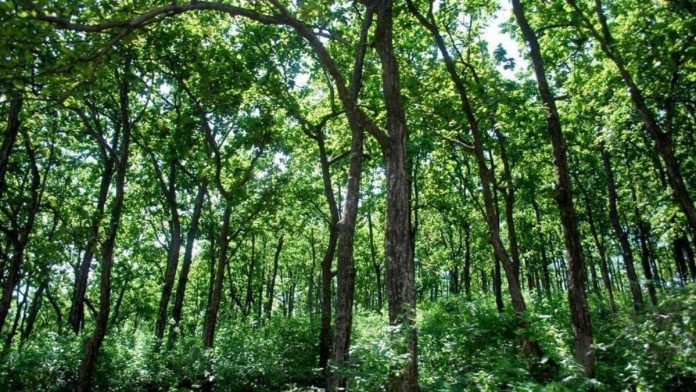In a world increasingly feeling the devastating impacts of climate change, deforestation and habitat loss, afforestation campaigns have become a beacon of hope. In J&K, this call to action is gaining momentum through various campaigns overseen by the Forest Department. Commendable strides are being made toward afforestation and conservation efforts in the UT; however, this progress, while noteworthy, also reveals areas that demand sustained commitment and focused attention. J&K’s forests, like many others around the world, have suffered from degradation due to a multitude of factors, including unregulated deforestation, encroachment, and climate-related impacts. These forests are not only a rich repository of biodiversity but also a critical source of ecosystem services such as carbon sequestration, soil stabilisation, and water regulation.
Efforts are being made to restore these degraded forests, specifically through campaigns such as “J&K Green Drive,” “Ek Ped Shahidon Ke Naam,” and “Ek Ped Maa Ke Naam.” The present need is for a proactive and systematic approach to closing the gap between degraded forest areas and the annual targets set under the afforestation plans. Installing boundary pillars around vulnerable areas and ensuring their geo-tagging is a way forward to secure forests from further encroachments. This speaks to the dual focus of forest management: replanting and safeguarding. Forests are more than just an accumulation of trees-they are complex ecosystems that require careful management, protection, and continuous monitoring.
The Forest Department has set ambitious goals, such as planting 150 lakh saplings under the “Ek Ped Maa Ke Naam” and “Ek Ped Shahidon Ke Naam” initiatives. In addition to these, another 100 lakh saplings are planned under other campaigns funded through the CAMPA. However, planting saplings is only the beginning. Ensuring their survival is a far greater challenge. The meeting highlighted that of the 851 plantation sites evaluated by AFC India, the overall survival rate of the saplings stands at 62.70%. While this is a reasonably strong survival rate given the harsh climatic and geographic conditions of the region, it also underscores the need for improved nurturing and protection of these saplings.
The role of remote sensing in forest management is of utmost importance. Integrating technology in the form of remote sensing has allowed for the identification of 2,150 square kilometres of degraded forests, out of which 552 square kilometres have been treated over the last five years. This tool has proven invaluable in assessing the extent of forest degradation and prioritising areas for treatment, giving forest managers a data-driven approach to conservation.
While the Forest Department showcased significant progress, certain challenges remain. The survival rate of saplings, though commendable, still leaves room for improvement. Ensuring the long-term survival of these saplings requires continuous monitoring, adequate watering, protection from grazing, and community involvement. The local population, which often relies on forest resources for their livelihoods, must be integrated into the conservation efforts. Their buy-in is essential for the long-term success of these campaigns. Additionally, installing 2,99,020 BPs across 2,135 forest areas is no small feat, and the efforts must be sustained with adequate manpower and resources. The Forest Department must also ensure that these pillars are not only installed but also maintained and renovated as needed, as evidenced by the re-surveying and renovation of over 1,12,000 pillars. Another area that demands attention is public awareness and engagement. Programs that educate people on the benefits of afforestation and their role in preserving these resources can create a sense of ownership and responsibility toward the forests.
The afforestation efforts currently underway in J&K are a crucial step toward not only restoring the green cover but also mitigating the impacts of climate change, conserving biodiversity, and ensuring a sustainable future for generations to come. The ambitious targets set by the Forest Department are achievable, but only with a sustained and coordinated effort from the Government, forest officials, local communities, and environmental organisations. Timely review of progress is most important.
Trending Now
E-Paper


